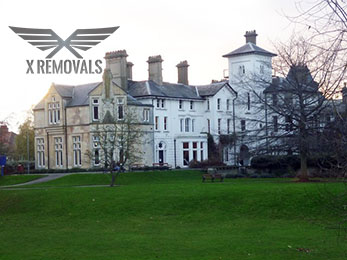
Avenue House
When moving around Finchley it would be a genuine shame for you to miss out on visiting this wonderful example of Victorian architecture. The house was built in 1859 and later refurbished by philanthropist Henry Charles Stephens, turning it into one of most beautiful houses remaining from that time period.
Henry Charles “Inky” Stephens
Henry Charles Stephens was born in 1841 into the family of Dr Henry Stephens and his wife Anne. They moved to Finchley in 1844 where the father set up a laboratory for testing inks. The son developed a passion for Dr Stephens’ work where he picked up much of the older man’s experience. He attended college at the age of 16, however he decided to devote himself to his family business, inheriting it after his father’s death. The reason for his fame and fortune is his discovery of an inerasable ink which became wildly popular.
Aside from his breakthrough in the field of chemistry “Inky” was also a prominent statesman and philanthropist, adored by the community he lived in. The Victoria Park, located there was build in honor of the golden jubilee of queen Victoria and was funded mainly by him.
Creating art
 After acquiring the house Stephens set forth to create a masterpiece. He purchased 10 acres of surrounding land to be turned into gardens. For this he employed none other than Robert Marnock, widely regarded as the best landscape designer in England at the time. The gardens have since been converted into a public park, much to the enjoyment of the denizens of Finchley, they are cared for by community volunteers. Marnock decided on importing different types of trees which have since venerable giants, watching over the peaceful park. As a final act of kindness to the people of the area, on his deathbed Henry Stephens left the gardens to the people. His intention was that everyone would share the joy that the masterfully arranged green area would provide.
After acquiring the house Stephens set forth to create a masterpiece. He purchased 10 acres of surrounding land to be turned into gardens. For this he employed none other than Robert Marnock, widely regarded as the best landscape designer in England at the time. The gardens have since been converted into a public park, much to the enjoyment of the denizens of Finchley, they are cared for by community volunteers. Marnock decided on importing different types of trees which have since venerable giants, watching over the peaceful park. As a final act of kindness to the people of the area, on his deathbed Henry Stephens left the gardens to the people. His intention was that everyone would share the joy that the masterfully arranged green area would provide.
Recent history
However war soon came to Europe and botanical marvels were the government’s last concern. The building had to be used as a hospital by the Royal Air force starting in 1919 and functioning as such until the last patient left in the 1925, at which point visitors were once again allowed to come to the park. The building afterwards was designated to be used as a public library and continued to be one for many years.
War disturbed the house once again a few decades later. During the German bombing runs a great deal of administrative buildings found themselves the targets. One of them was the Finchley Borough Council offices which, the functions of which were undertaken by Avenue House. The raids forced the people to use the basement as a bomb shelter as well.
Despite some incidents in the recent years (a fire in 1989) the building is in perfect condition today. Entrance to the gardens is free and the plant life there is maintained by a charity organization.

Sorry, the comment form is closed at this time.